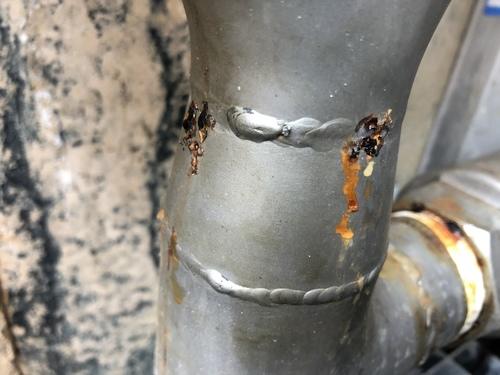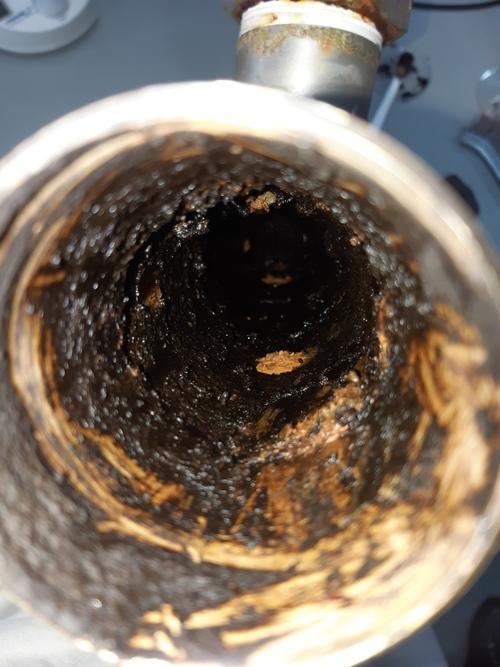The investigated wastewater treatment plant reuses purified water in its own operating process. In recent years, leaks have occurred at a number of points in the service water system. It is suspected that these leaks are caused by Microbially Influenced Corrosion (MIC). Microbial Analysis has been commissioned to determine the exact cause of the leaks and to examine what measures can be taken to extend the life of the current piping system. In addition, the client wishes to receive advice on how to prevent damage in new pipelines in the future.
What we noticed during the inspection was that almost all fittings and many welds in the pipes, through which service water flows, show leakage. For the investigation, samples were taken from the affected parts and a number of pipe sections were removed for examination in our laboratory. The samples and the pipe sections were examined for the presence of MIC-causing micro-organisms using qPCR. Furthermore, the material was examined microscopically and metallurgically in order to map the type of damage, its exact location and the shape of the damage. X-ray diffraction (XRD) and X-ray fluorescence (XRF) analyses were performed to get a better idea of the chemical composition and nature of the deposits in the pipes.
The microbiological analyses clearly show the involvement of micro-organisms in the damage. The process water, originating from the biological wastewater treatment plant, is an extremely good source for microbiological growth. Many microorganisms are therefore present in the entire system. The number of organisms related to MIC corrosion is also very high and therefore the risk of MIC corrosion is imminent.
Metallurgical research was conducted in order to determine whether MIC is the primary cause of the damage. This research shows, amongst other things, that the microstructure of the stainless steel has changed as a result of high stresses such as bending and welding, making it more susceptible to degradation by the large amounts of MIC organisms. The outside of the pipe is much less exposed to MIC corrosion. Here, the damage is primarily caused by chemical corrosion and MIC corrosion only contributes to the process in the second instance. Remarkably, most of the damage seems to start on the external side.
For the client, a plan was compiled with mitigating and preventive measures to prevent further damage.

Based on our research, we can show you where and why risks occur in a system and what measures need to be taken. We can also provide advice in the design phase of a system to prevent damage as much as possible.
Depending on your situation, it may be advisable to include MIC corrosion monitoring as part of your risk-based inspection.

If you would like to know how we can help you in the fight against MIC corrosion, please contact Elsemiek Croese,
croese@microbialanalysis.com.
